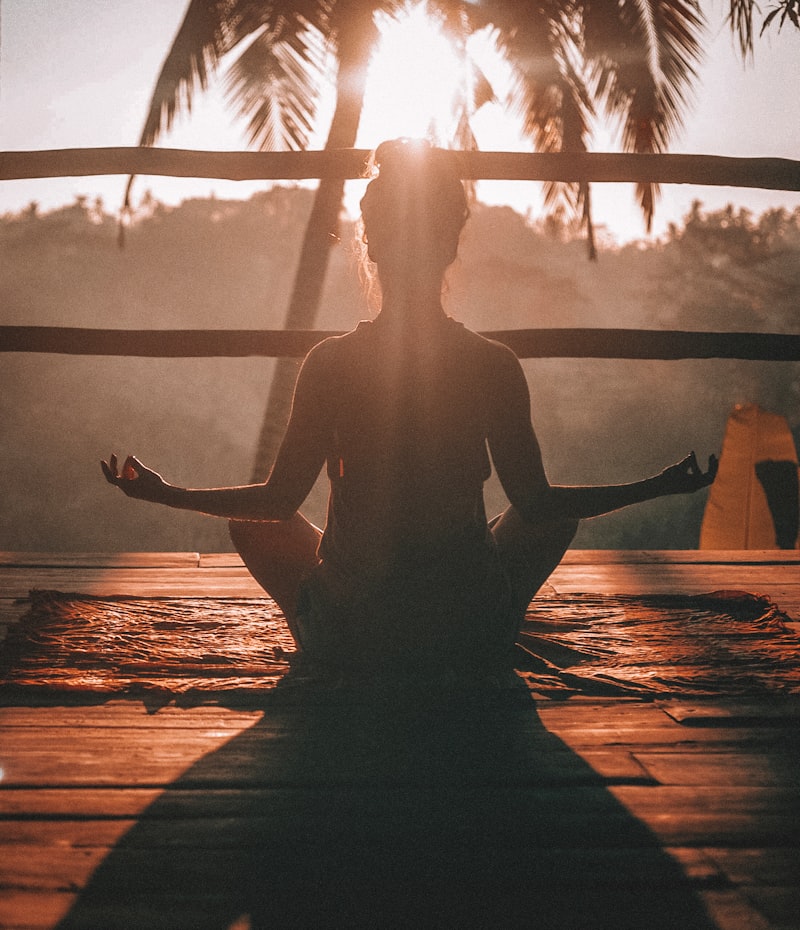As we age, staying active and maintaining flexibility becomes increasingly important. Yoga, with its gentle yet effective movements, has emerged as a favorite among aging adults for its myriad benefits. Let’s delve into why yoga is highly recommended for seniors looking to enhance their overall well-being.
One of the standout advantages of yoga for aging adults is its ability to improve flexibility and balance. Through a series of poses and stretches, yoga helps loosen tight muscles and increase range of motion. This is crucial in reducing the risk of falls and injuries, which unfortunately become more common as we grow older.
Moreover, yoga is a fantastic way to support joint health. Many yoga poses focus on lubricating the joints and improving their function. For seniors dealing with arthritis or joint pain, these gentle movements can provide relief and even contribute to better long-term joint health.
Beyond the physical benefits, yoga is renowned for its positive impact on mental health. The practice encourages mindfulness and deep breathing, which can reduce stress levels and promote relaxation. In today’s fast-paced world, this aspect of yoga is particularly valuable for seniors seeking to maintain mental clarity and emotional well-being.
Another lesser-known benefit of yoga for aging adults is its role in improving sleep quality. Many seniors struggle with insomnia or disrupted sleep patterns. By incorporating yoga into their routine, they can experience better sleep through relaxation techniques and improved circulation.
Furthermore, yoga offers a social element that can be highly beneficial for older adults. Attending yoga classes provides an opportunity to connect with like-minded individuals, fostering a sense of community and combating feelings of loneliness or isolation.
Yoga stands out as a holistic approach to promoting health and wellness in aging adults. From enhancing flexibility and joint health to improving mental clarity and fostering social connections, the benefits are numerous and profound. Whether you’re new to yoga or have practiced for years, its positive impact on aging is undeniable.
A Fountain of Youth: How Yoga Slows Aging in Seniors
One of the primary ways yoga achieves this is through its emphasis on gentle movements and stretches. Unlike high-impact exercises that can strain aging joints and muscles, yoga offers a low-impact alternative that improves flexibility and strength without causing undue stress. This is particularly beneficial for seniors who may experience arthritis or stiffness, as yoga helps to lubricate joints and increase mobility.
Beyond the physical benefits, yoga also nurtures mental well-being. The practice encourages mindfulness and deep breathing, which can reduce stress levels and promote a sense of calm. For seniors facing the challenges of aging, this mental clarity can be transformative, enhancing overall quality of life and emotional resilience.
Moreover, yoga has been shown to have specific health benefits that directly combat aging-related issues. It can improve balance, which is crucial for preventing falls—a common concern among older adults. By enhancing balance and proprioception, yoga reduces the risk of injury and promotes independence in daily activities.
Additionally, yoga promotes better sleep patterns and may alleviate symptoms of insomnia—a prevalent issue among seniors. Better sleep not only enhances cognitive function but also supports the body’s natural repair processes, contributing to overall health and vitality.
In essence, yoga acts as a powerful antidote to the effects of aging by addressing both physical and mental well-being. Its gentle yet effective approach makes it accessible to seniors of all fitness levels, offering a holistic path to staying youthful and vibrant well into the golden years.
Unlocking Vitality: Yoga’s Role in Promoting Longevity
Ever wondered how some people seem to defy age, radiating energy and vitality well into their later years? It might seem like a secret only a select few know, but the truth is, achieving longevity and vitality is within reach for anyone, thanks to the transformative power of yoga.
Yoga isn’t just about striking poses on a mat; it’s a holistic practice that encompasses physical postures, breathwork, meditation, and philosophy. At its core, yoga is about creating harmony between the body, mind, and spirit. This balance is key to unlocking longevity because it addresses the root causes of aging, both physical and mental.
Physically, yoga helps maintain flexibility, strength, and balance, which are crucial for preventing injuries and maintaining mobility as we age. The gentle stretching and strengthening poses improve circulation and stimulate the lymphatic system, aiding detoxification and boosting the immune system. These benefits not only support overall health but also contribute to a youthful appearance and vitality.
Mentally, yoga is a powerful tool for stress reduction. Chronic stress accelerates aging by contributing to inflammation and the deterioration of cells. Yoga promotes relaxation through deep breathing and mindfulness practices, reducing stress hormones like cortisol. This not only calms the mind but also supports better sleep, another crucial factor in maintaining health and longevity.
One of the lesser-known benefits of yoga is its impact on the nervous system. Practices such as pranayama (breath control) and meditation activate the parasympathetic nervous system, often referred to as the rest-and-digest response. This state of deep relaxation allows the body to repair and rejuvenate itself at a cellular level, slowing down the aging process from within.
Imagine yoga as your personal fountain of youth, accessible to everyone regardless of age or fitness level. It’s not about contorting into impossible poses; it’s about embracing a practice that nourishes your body, mind, and spirit. Just as a well-tended garden thrives with care and attention, so too can your body flourish with the regular practice of yoga.
Mindful Movement: Yoga’s Mental and Physical Benefits for Older Adults
Yoga isn’t just a trend; it’s a transformative practice that offers incredible benefits, especially for older adults looking to enhance their mental and physical well-being. Unlike vigorous workouts that might strain aging bodies, yoga embraces a gentle yet powerful approach that focuses on breathing, flexibility, and mindfulness.
One of the key advantages of yoga for older adults is its ability to improve flexibility and mobility. As we age, joints can stiffen and muscles may weaken, making everyday movements more challenging. Yoga poses, such as gentle stretches and balance exercises, help to increase flexibility and maintain range of motion. This not only aids in daily activities like bending and reaching but also reduces the risk of falls by enhancing stability.
Beyond physical benefits, yoga is renowned for its positive impact on mental health. The practice encourages mindfulness, a state of focused awareness on the present moment. For older adults facing stress, anxiety, or even cognitive decline, yoga provides a sanctuary where they can cultivate peace and mental clarity. Breathing techniques practiced in yoga promote relaxation and reduce the physiological markers of stress, such as elevated heart rate and blood pressure.
Moreover, yoga serves as a social and communal activity for older adults, fostering connections with others who share similar health goals. Classes often create a supportive environment where participants encourage each other and celebrate progress together. This sense of community is invaluable for combating feelings of loneliness or isolation that can sometimes accompany aging.
Staying Strong: How Yoga Helps Maintain Muscle Mass as We Age
Yoga is more than just stretching and relaxation; it’s a dynamic exercise that engages muscles throughout the body. Poses such as Downward Dog, Warrior II, and Tree Pose require strength to hold and balance, which helps in toning muscles and keeping them active. Unlike high-impact exercises that can strain aging joints and muscles, yoga offers a gentle yet effective way to build and maintain muscle strength.
The beauty of yoga lies in its adaptability. Whether you’re a beginner or have been practicing for years, there are poses and routines tailored to every fitness level and age group. This adaptability makes yoga accessible to older adults who may have limitations or joint issues, allowing them to strengthen muscles without the risk of injury.
Moreover, yoga promotes muscle endurance by encouraging participants to hold poses for extended periods. This endurance training not only builds strength but also improves muscle stamina, which is crucial for maintaining mobility and independence as we age.
Beyond the physical benefits, yoga also supports overall well-being. It reduces stress levels, promotes relaxation, and enhances sleep quality, all of which contribute to better muscle recovery and growth. By reducing cortisol levels (the stress hormone), yoga creates an environment conducive to muscle repair and maintenance.
In essence, integrating yoga into your fitness routine can be a game-changer for preserving muscle mass as you grow older. Its combination of strength-building poses, adaptability, and stress-reducing benefits makes it a holistic approach to maintaining both physical and mental health. Whether practiced in a studio or in the comfort of your home, yoga offers a path to staying strong, flexible, and resilient through the aging process.
Flexible Bodies, Sharp Minds: Yoga’s Cognitive Benefits for Seniors
Firstly, yoga promotes mindfulness through deep breathing and meditation. These practices help seniors stay present and focused, reducing stress and enhancing mental clarity. By cultivating mindfulness, yoga helps seniors manage everyday challenges with a calm and clear mindset.
Moreover, the physical aspects of yoga contribute significantly to cognitive function. Practicing yoga poses improves balance, strength, and coordination, which are crucial for preventing falls and maintaining independence. These physical benefits translate into enhanced cognitive abilities as the brain remains actively engaged in coordinating movements and maintaining posture.

Additionally, yoga has been shown to boost memory and concentration. The concentration required during yoga sessions, whether holding a pose or following a sequence, exercises the brain’s ability to focus and retain information. Over time, this can lead to improved cognitive function and better memory recall for seniors.
Furthermore, yoga supports overall brain health by reducing inflammation and promoting neuroplasticity. Regular practice may help protect against neurodegenerative diseases like Alzheimer’s by stimulating the growth of new neural connections and protecting existing ones.


Yoga offers seniors a multifaceted approach to maintaining cognitive health. From mindfulness and stress reduction to improved balance and memory, the benefits of yoga extend far beyond the physical. By integrating yoga into their routine, seniors can nurture both their bodies and minds, leading to a more vibrant and fulfilling quality of life.
From Stiffness to Suppleness: Yoga’s Impact on Joint Health
One of the key benefits of yoga is its ability to increase flexibility and suppleness in the joints. Through regular practice, yoga stretches and strengthens the muscles surrounding the joints, which helps improve their range of motion. Poses like Downward Dog, Warrior poses, and gentle twists gently work the hips, knees, shoulders, and spine, promoting fluidity and reducing stiffness.
Moreover, yoga is known for its stress-relieving benefits. Stress can manifest physically, causing tension in the muscles and joints. By incorporating breathing techniques and mindfulness into each pose, yoga helps practitioners relax deeply, releasing tension and easing joint stiffness.
Another remarkable aspect of yoga is its adaptability. Whether you’re a beginner or an experienced yogi, there are modifications and variations of poses that can be tailored to your comfort level and physical condition. This makes yoga accessible to individuals of all ages and fitness levels, offering a low-impact yet effective way to enhance joint health over time.
In essence, yoga goes beyond mere physical exercise; it’s a holistic practice that nurtures both the body and mind. By promoting flexibility, reducing stress, and fostering mindfulness, yoga supports joint health in a comprehensive manner. Incorporating yoga into your routine can lead to greater mobility, less discomfort, and a deeper connection with your body’s natural rhythms.
Frequently Asked Questions
What are the physical benefits of yoga for seniors?
Discover how yoga benefits seniors physically, promoting flexibility, balance, and strength. Yoga also enhances joint health and overall mobility, making daily activities easier and improving overall well-being.
What mental health benefits does yoga offer older adults?
Discover how yoga can benefit older adults’ mental health. Learn about its positive effects on reducing stress, improving mood, enhancing cognitive function, and promoting relaxation through gentle, accessible practices.
Can yoga help alleviate joint pain and stiffness in seniors?
Discover how yoga can effectively reduce joint pain and stiffness in seniors through gentle stretches and movements that improve flexibility and strengthen muscles around the joints. Regular practice can enhance mobility, reduce inflammation, and promote overall well-being.
How does yoga help improve flexibility and balance as we age?
Discover how yoga enhances flexibility and balance as you age. Learn about the specific poses and movements that gradually stretch muscles and improve joint mobility, helping to maintain agility and stability.
What are some safe yoga poses recommended for elderly practitioners?
Discover safe yoga poses ideal for elderly practitioners. Learn effective poses that promote flexibility, balance, and relaxation, tailored for gentle and gradual progression in practice.


